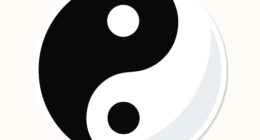Cyan is a bright blue-green color, while turquoise is a greenish-blue shade with more green tones. Turquoise is slightly warmer in appearance.
TL;DR Cyan Vs. Turquoise
Cyan is a bright and intense shade of blue-green, often described as the color of the sky on a clear day. It has a higher proportion of blue in its composition, giving it a cooler tone. Cyan is commonly used in digital design and printing industries.
Turquoise is a vibrant blend of blue and green with hints of yellow undertones. It derives its name from the precious gemstone that shares its unique hue. Turquoise exudes warmth and has an earthy quality to it, reminiscent of tropical waters or sandy beaches.
What is cyan?

Cyan is a color that falls between blue and green on the visible light spectrum. It is characterized by its bright and vibrant appearance, leaning more towards the blue end of the spectrum while containing noticeable green undertones.
Cyan is an additive primary color, meaning it can be combined with red and green to create a wide range of colors in electronic displays, such as computer monitors and TVs.
Cyan’s name is derived from the Greek word “kyanos,” which means “dark blue enamel” or “blue-green.” It is widely used in various applications, including graphic design, art, and printing.
Cyan is a significant color in nature, often seen in bodies of water and certain minerals. Overall, cyan’s versatility and eye-catching nature contribute to its prevalence in various creative and practical contexts.
What is turquoise?

Turquoise is a blue-green color reminiscent of the gemstone of the same name. It falls between blue and green on the color spectrum, leaning towards green while exhibiting distinct blue undertones.
The word “turquoise” originates from the French term for “Turkish stone,” as the gemstone was historically imported from Turkey.
Turquoise has a soothing and calming quality, often associated with tropical waters and a sense of serenity. This unique color finds application in a multitude of areas, including interior design, fashion, and art.
Turquoise is utilized in jewelry and accessories, the gemstone turquoise has been treasured for centuries across various cultures and is believed to possess protective and healing qualities.
Cyan Vs. Turquoise – Key differences
Cyan leans toward a bright blue-green hue with minimal warmth, often employed in electronic displays and modern aesthetics.
In contrast, turquoise embraces a slightly greener demeanor with notable blue undertones, evoking feelings of serenity and nature’s tranquility.
While cyan is a primary color in additive models, turquoise is a secondary or tertiary choice in design.
| Aspect | Cyan | Turquoise |
|---|---|---|
| Color Description | Bright blue-green with no strong warmth | Blue-green with more noticeable green tones |
| Position on Spectrum | Closer to blue end, with some green | Leans towards green while having blue undertones |
| Origin of Name | Greek "kyanos," meaning "dark blue enamel" | French "turquoise," from "Turkish stone" |
| Usage in Printing | Primary color in additive color model | Secondary or tertiary color in design |
| Gemstone | Not directly associated with a gemstone | Named after the turquoise gemstone |
| Emotional Effect | Associated with clarity and cleanliness | Evokes calmness, serenity, and nature |
| Interior Design | Used for modern, tech-inspired aesthetics | Often used for tranquil and coastal themes |
| Popularity | Widely used in electronics, branding | Popular in jewelry, decor, and fashion |
Image Credits
Featured Image By – Eelffica from Pixabay
Image 1 By – Photo by Andres Victorero
Image 2 By – Photo by Mudassir Ali









